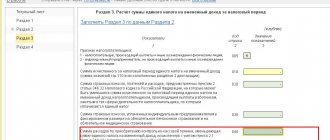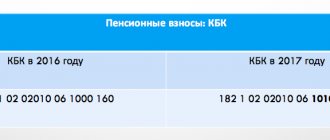2018 has brought new changes in accounting and will be active. Chief accountants need to be attentive to all the subtleties of the transition to new standards. You should pay special attention to the correctness of record keeping in the information base and put all matters in order. Otherwise, errors and inaccuracies are fraught with fines and inspections.
In April 2015, the Russian Ministry of Finance approved a program for the development of federal accounting standards for public sector organizations (Order No. 64n dated April 10, 2015).
According to the program, ten standards must be in effect from January 1, 2021. However, the entry into force of three of them was planned to be postponed from 2021 to 2021: the Russian Ministry of Finance prepared a draft order to introduce appropriate changes to the program.
On October 31, 2021, the Russian Ministry of Finance issued Order No. 170n “On approval of the program for the development of federal accounting standards for public sector organizations for 2017-2019.” and on invalidation of orders of the Ministry of Finance of Russia dated April 10, 2015 No. 64n “On approval of the program for the development of federal accounting standards for public sector organizations” and November 25, 2016 No. 218n “On amendments to the order of the Ministry of Finance of Russia dated April 10, 2015 No. 64n “On” approval of the program for the development of federal accounting standards for public sector organizations."
The standards come into force in stages from January 1, 2021. The final transition to use is planned for 2021. At the same time, changes will be made to the current instructions for accounting and reporting, forms of primary accounting documents and registers.
Currently, five standards have been approved and registered with the Russian Ministry of Justice:
- “Conceptual foundations of accounting and reporting of public sector organizations” (Order of the Ministry of Finance of Russia dated December 31, 2016 No. 256n);
- “Fixed assets” (Order of the Ministry of Finance of Russia dated December 31, 2016 No. 257n);
- “Rent” (Order of the Ministry of Finance of Russia dated December 31, 2016 No. 258n);
- “Impairment of assets” (Order of the Ministry of Finance of Russia dated December 31, 2016 No. 259n);
- “Presentation of accounting (financial) statements” (Order of the Ministry of Finance of Russia dated December 31, 2016 No. 260n).
Drafts of other standards are posted on the website of the Ministry of Finance of Russia in the section “Accounting and accounting (financial) reporting of the public sector”, subsection “Financial reporting standards for the public sector”.
As noted, changes in accounting will be introduced gradually, from 2021 to 2021. 29 new standards are expected . Innovations entail a number of significant changes. Their goal is to increase the efficiency of government agencies.
The name of the standard, “Conceptual Framework for Accounting and Reporting for Public Sector Organizations,” speaks for itself. This is a basic document that defines uniform requirements for accounting and reporting in public sector organizations:
- basic rules (methods) of accounting;
- accounting objects, general rules for their recognition (derecognition), valuation (monetary measurement) and valuation methods;
- general rules for the formation of information disclosed in accounting (financial) statements, their qualitative characteristics;
- basic principles (assumptions) of reporting preparation;
- basic requirements for inventory of assets and liabilities.
Public sector organizations must apply the standard when maintaining accounting (budget) records from January 1, 2021. To prepare reports, the provisions of the standard must be followed starting with the 2021 reporting. Reporting for 2017 is presented according to the old rules.
The provisions of the standard are applied simultaneously with other approved standards, as well as regulatory legal acts that govern accounting (budget) accounting and reporting.
To understand the essence of the upcoming changes, the study of standards must begin with the conceptual foundations. Let's analyze the provisions of the document. What are fundamentally new approaches to data generation?
Global changes
Accounting objects
The main innovations concern accounting objects. The standard defines assets, liabilities, net assets, income, and expenses for the first time.
An asset is property (including cash and non-cash funds) that meets the following conditions:
- belongs to the institution and (or) is in its use;
- controlled by the institution as a result of the facts of economic life that have occurred;
- contains useful potential or economic benefits[1].
The definition of an asset uses a number of new terms. Useful potential is the suitability of an asset for use in the activities of the institution, exchange, and repayment of accepted obligations. The use of property does not necessarily have to be accompanied by the receipt of funds. It is sufficient that it serves to enable the institution to perform its functions and achieve its goals. Thus, the asset is characterized by certain consumer properties.
Future economic benefits are recognized as receipts of cash (cash equivalents) resulting from the use of an asset, for example, lease payments.
Control over an asset can be said if an institution has the right to use the asset (including temporarily) to extract useful potential or obtain future economic benefits and can exclude or regulate access to this useful potential or economic benefits. For accounting purposes, it is assumed that the institution controls the property that the owner (founder) has assigned to it.
A liability is a debt, the settlement of which will result in the disposal of assets embodying useful potential or economic benefits. Obligations are accepted for accounting if they arose by virtue of a law, another regulatory legal act, a municipal act or an agreement (contract, agreement).
The difference between assets and liabilities on a certain date shows the value of net assets. Property for which the institution is not responsible for its obligations is not included in the calculation of net assets. Net assets can take both positive and negative values.
Income is an increase in the useful potential of assets and (or) the receipt of economic benefits during the reporting period (except for income associated with contributions of the owner, founder). The contribution of the owner (founder) is the property that he transferred to the institution (except for cash and cash equivalents).
An expense is a decrease in the useful potential of assets and (or) a decrease in economic benefits for the reporting period as a result of the disposal or consumption of assets or the occurrence of liabilities.
The exception is the seizure of property by the owner (founder), with the exception of cash and cash equivalents.
The difference between income and expenses represents the financial result for the reporting period.
Budget income is taken into account by administrators, expenses are taken into account by the main managers (managers) and recipients of budget funds.
Thus, when reporting for 2021, only assets can be listed on the balance sheet. But by 2021, the accounting department of the institution needs to sort out the division of property into an asset and a non-asset (Fig. 2). The same thing should happen with accounts receivable, they need to be written off and removed from the balance sheet.
Recognition of accounting objects
An object is accepted for accounting and (or) reflected in financial statements if three conditions are simultaneously met:
- the object meets the established definition;
- the institution is confident in the future increase (decrease) in useful potential or increase (decrease) in future economic benefits associated with the object;
- the cost of the object can be estimated[2].
If the value of an object cannot be assessed, it is not recognized in accounting, but information about it is disclosed in the explanatory note to the financial statements.
The object is removed from the balance sheet on the date when at least one of the listed conditions is no longer met.
If income is recognized over several accounting periods, expenses that correspond to these income must be allocated between the same accounting periods.
Assessment of accounting objects
The standard introduces a new concept of “fair value”. It corresponds to the price at which ownership of the asset is transferred between independent parties to the transaction. Accounting items that need to be measured at fair value, and the cases in which it is used, will be established in the standards dedicated to these items.
The fair value of assets and liabilities can be determined by two main methods:
- market prices - based on current market prices or data on recent transactions with similar or similar assets (liabilities) completed without deferred payment;
- depreciated replacement cost - calculated as the difference between the cost of complete restoration (reproduction) of the useful potential of an asset or replacement of an asset (whichever is less) and the amount of accumulated depreciation calculated on the basis of such cost[3].
As an example of the cost of restoring (reproducing) an asset, the cost of restoring a building in the event of its destruction is given. The replacement cost of an asset is calculated based on the market purchase price of a similar asset with a comparable remaining useful life. For example, the cost of replacing a destroyed building with another building with a comparable useful life.
Generating data for reporting
The standard for the first time formulates the characteristics that information in reporting must meet:
- relevance (relevance) – data can be used for financial assessment of future events and (or) to confirm and adjust previously made conclusions;
- materiality – indicators influence user decisions;
- reliable representation (completeness, neutrality, absence of significant errors) – reporting includes all available data, which is selected objectively and formed in accordance with regulatory legal acts;
- Comparability – allows you to identify similarities and differences between such information and information in other reports;
- the ability to check and (or) confirm the reliability of data (verification) by direct calculation (for example, during inventory) or using formulas, models, and other methods;
- timeliness – availability of reporting to users at a time when information may influence decisions made;
- understandability - the composition (content) and form of presentation of information allow users of reporting who have the necessary knowledge about the activities of the institution to understand its meaning [4].
The standard for the first time enshrines the principle of priority of content over form. It means that information about accounting objects and facts of economic life should be presented in accordance with their economic essence, and not just their legal form.
The legal and economic content of the facts of economic life may differ or even contradict each other. For example, if we talk about property, then from a legal point of view the volume of rights to this property is important: it is in an institution with the right of operational management or leased, received for free use, for storage, or on commission.
From an economic point of view, to recognize property as an asset, what is important is not the rights to it, but its useful potential, ability to bring economic benefits and the ability to control the object.
Property may be used in the activities of the institution to achieve its statutory goals, but not owned by the right of operational management, but leased. The opposite situation is also possible: the property is assigned to the institution with the right of operational management and is listed on the balance sheet, but is unsuitable for use.
Currently, only property that is assigned under the right of operational management is reflected on the institution’s balance sheet. Property received for paid or gratuitous use is shown on off-balance sheet accounts. However, from 2021, the principle of presenting information in accounting and reporting is changing dramatically. It is not the legal, but the economic interpretation of the facts of economic life that becomes decisive. Thus, the accounting methodology comes closer to the approaches adopted in international financial reporting standards.
In relation to operations with property, this means that the right to use leased fixed assets will be reflected by the user (lessee) as part of non-financial assets as an independent accounting object[5]. This is also enshrined in the federal “Rent” standard, which also comes into force on January 1, 2021.
Instruction 174n with changes for 2021 - changes in the chart of accounts (account 101)
Let's look at the main changes in account 101 00 000 “Fixed Assets”:
1. New wiring has appeared. When fixed assets are transferred for financial lease (gratuitous perpetual use) by the lessor (lender), the disposal of fixed assets classified as non-operating (financial) environment objects is reflected in the following entries:
| DEBIT account 0 401 10 172 “Income from transactions with assets” of the corresponding analytical accounting accounts: |
| 0 104 00 000 “Depreciation” |
| 0 114 00 000 “Impairment of non-financial assets” |
| CREDIT of the corresponding analytical accounting accounts account 0 101 00 000 “Fixed assets” |
2. A new group 00 “Fixed assets – property in concession” and analytical accounting accounts were introduced:
| Analytical accounting account | Account names |
| 0 101 91 000 | “Residential premises = property in concession” |
| 0 101 92 000 | “Non-residential premises (buildings and structures) – property in concession” |
| 0 101 94 000 | “Machinery and equipment – concession property” |
| 0 101 95 000 | “Vehicles – concession property” |
| 0 101 97 000 | “Biological resources – property in concession” |
| 0 101 98 000 | “Other fixed assets – property in concession” |
3. The group of accounting accounts 0 101 40 000 “Fixed assets – leased items” and analytical accounts for it (0 101 (41 – 48) 000) are excluded.
4. The following accounts have been excluded:
| Analytical accounting account | Account name |
| 0 101 18 000 | “Other fixed assets – real estate of the institution” |
| 0 101 21 000 | “Residential premises are particularly valuable movable property of an institution” |
| 0 101 23 000 | “Structures are especially valuable movable property of an institution” |
| 0 101 31 000 | “Residential premises – other movable property of the institution” |
| 0 101 43 000 | “Structures – leased items” |
5. Certain account names have been changed:
| Account name in the old version | Name of the account in the new edition |
| 0 101 26 000 “Industrial and business equipment - especially valuable movable property of the institution” | 0 101 26 000 “Industrial and economic equipment - especially valuable movable property of the institution” |
| 0 101 27 000 “The library collection is a particularly valuable movable property of the institution” | 0 101 27 000 “Biological resources are particularly valuable movable property of the institution” |
| 0 101 33 000 “Structures – other movable property of the institution” | 0 101 33 000 “Investment real estate” – other movable property of the institution |
| 0 101 36 000 “Industrial and business equipment - other movable property of the institution” | 0 101 36 000 “Industrial and economic inventory - other movable property of the institution” |
| 0 101 37 000 “Library collection – other movable property of the institution” | 0 101 37 000 “Biological resources – other movable property of the institution” |
Instruction 174n with changes for 2021 - changes in the chart of accounts (account 102)
On account 102 00 000, as in the old version of the Instructions, intangible assets are taken into account. But the changes affected this account too - analytical accounting accounts 0 102 40 000 “Intangible assets - leased items” were excluded.
That is, currently only 2 accounts are used to generate information about the presence of business transactions and intangible assets: (click to expand)
| Analytical accounting account | Account name |
| 0 102 20 000 | “Intangible assets are especially valuable movable property of an institution” |
| 0 102 30 000 | “Intangible assets - other movable property of an institution” |
* * *
Let us briefly formulate the main conclusions.
- The changes made by Order No. 212n to Instruction No. 174n came into force on 01/06/2018, and therefore they are subject to accounting in 2021.
- Among the significant amendments are the following innovations:
- Accounts 0 204 51 000 “Assets in management companies”, 0 215 51 000 “Investments in management companies” were removed from the accounting chart of accounts;
- a new procedure has been established for the formation of individual account numbers (0 201 00 000, 0 207 00 000, 0 209 81 000, 0 210 05 000, 0 301 00 000, 0 401 60 000);
- accounting records have been added to document the internal movement of non-financial assets between material persons, as well as in the case of their transfer for lease and trust management;
- adjustments have been introduced to account for VAT and subsidies allocated for the implementation of government tasks.
[1] Instructions for the use of the Chart of Accounts for accounting of budgetary institutions, approved. By Order of the Ministry of Finance of the Russian Federation dated December 16, 2010 No. 174n.
Budgetary organizations: accounting and taxation, No. 2, 2018
Instruction 174n with changes for 2021 - changes in the chart of accounts (account 209)
An accountant, when making calculations on the amounts of damage caused to a budgetary institution and other income on account 209 00 000, will have to take into account the innovations:
1. Settlements for other income are reflected in account 209 89 000 (not in account 209 83 000).
2. The name of the group of accounts 209 40 has changed - now it is “Calculations for fines, penalties, penalties, damages” (not “Calculations for forced seizure amounts”).
3. New accounts have been introduced:
| Check | Name |
| 0 209 34 000 | Cost compensation calculations |
| 0 209 41 000 | Calculations of income from penalties for violation of the terms of contracts (agreements) |
| 0 209 43 000 | Calculations of income from insurance claims |
| 0 209 44 000 | Calculations of income from compensation for property damage (except for insurance premiums) |
| 0 209 45 000 | Calculations of income from other amounts of forced seizure |
Instruction 174n with changes for 2021 - changes in the chart of accounts (account 106)
Account 106 00 000 “Investments in non-financial assets” has also undergone some changes: (click to expand)
- Added account 0 106 33 000 “Investments in non-produced assets - other movable property of the institution.”
- The account group 0 106 90 000 “Investments in the property of the grantor” and analytical accounts for it were introduced: 0 106 91 000 “Investments in fixed assets in the concession” and 0 106 93 000 “Investments in non-produced assets in the concession”.
- Count group 40 has been renamed. Instead of the old name “Investments in leased objects” the name “Investments in financial lease objects” is now used.
For this reason, the following analytical accounting accounts were excluded:
| Check | Name |
| 0 106 41 000 | Investments in fixed assets – leased items |
| 0 106 42 000 | Investments in intangible assets – leased items |
| 0 106 44 000 | Investments in inventories – leased items |
Legal regulation
Treasurers are a separate type of state and municipal organizations created to carry out state tasks and municipal tasks or carry out the functions of government bodies, financed from the corresponding budget on the basis of budget estimates. The rules for organizing and maintaining accounting in government institutions are regulated by:
- Law No. 402-FZ regarding key issues in the organization of accounting;
- instructions No. 157n and instructions 162n in budget accounting for government institutions in 2021;
- Instruction No. 132n regarding the formation of budget classification codes to reflect transactions in corporate accounting;
- Instruction No. 191n regarding the composition and procedure for generating reports in government institutions;
- order No. 209n regarding the formation of KOSGU;
- federal accounting standards regulating industry accounting methods;
- methodological recommendations, letters and explanations from the Ministry of Finance of the Russian Federation and individual departments regarding the settlement of issues related to accounting.
The main system of regulatory regulation of accounting includes regional and municipal regulations that establish separate rules for accounting and reporting.
Answers to common questions about what is instruction 174n with changes for 2021
Question #1:
At what time should the lessee (user of the property) recognize the object of accounting for an operating lease by debiting account 0 111 40 000 and crediting accounts 0 302 24 730 or 0 302 29 730?
Answer:
It is necessary to recognize the accounting object of an operating lease on the date of classification of the lease accounting object in the amount of lease payments for the entire period of use of the property provided for in the lease agreement.
Question #2:
What is the reason for the introduction of new analytical accounting accounts in accounts 208 00 000 and 206 00 000, according to Instruction 174n?
Answer:
These innovations are associated with the presence of new subarticles of KOSGU.
Instruction 174n with changes for 2021 - changes in the chart of accounts (account 103)
Non-productive assets are subject to accounting in account 103 00 000. After making adjustments to the Instructions, the following groups of accounts are now used to account for non-productive assets:
| Account group | Name |
| 0 103 10 000 | Non-productive assets – real estate of the institution |
| 0 103 30 000 | Non-productive assets – other movable property |
| 0 103 90 000 | Non-productive assets – as part of the grantor’s property |
Previously used analytical accounting accounts belong to the 1st group. New accounts have been introduced for groups 30 and 90:
| Check | Name |
| 0 103 32 000 | Subsoil resources – other movable property of the institution |
| 0 103 33 000 | Other non-produced assets – other movable property of the institution |
| 0 103 91 000 | Land is part of the grantor's property |










